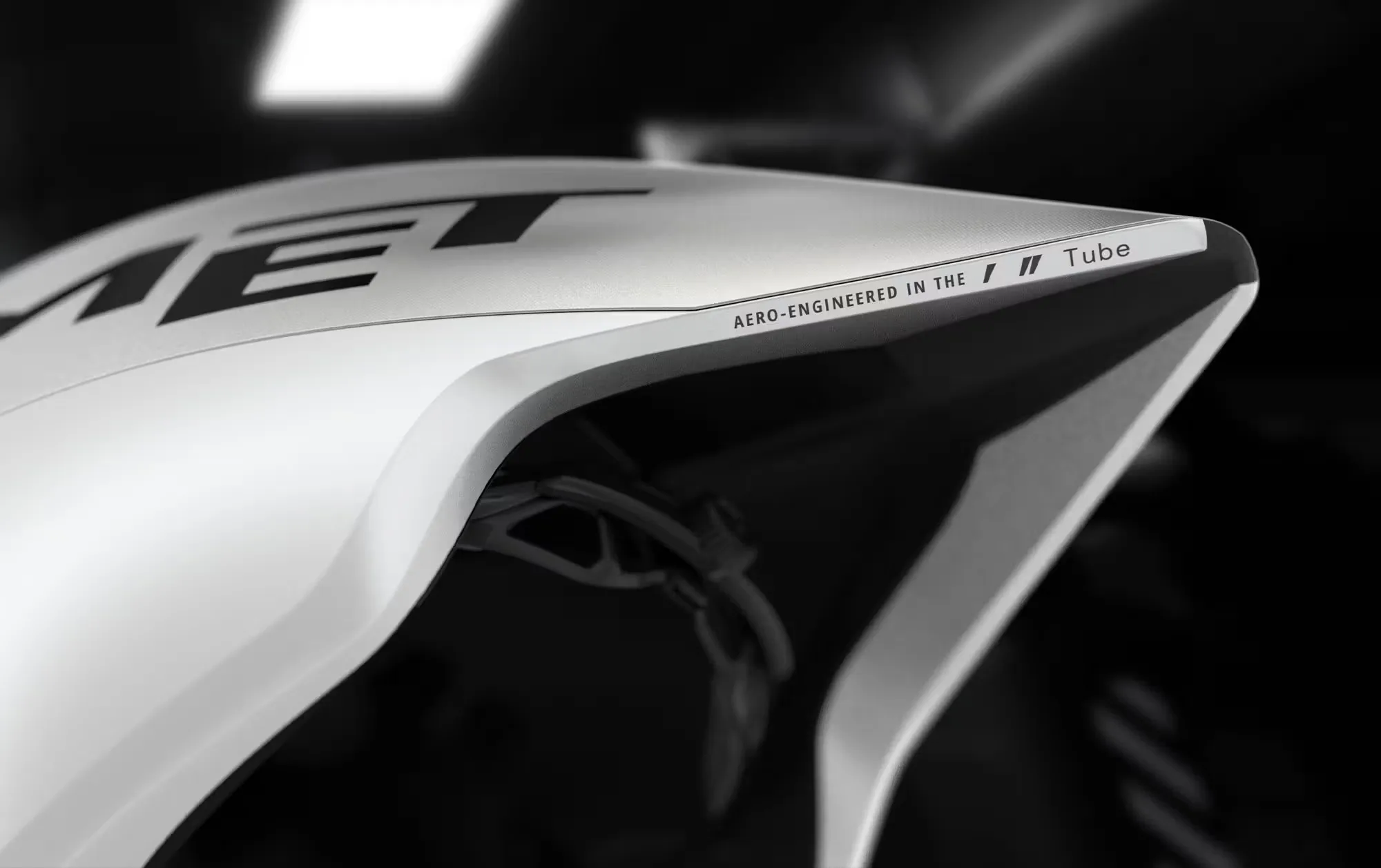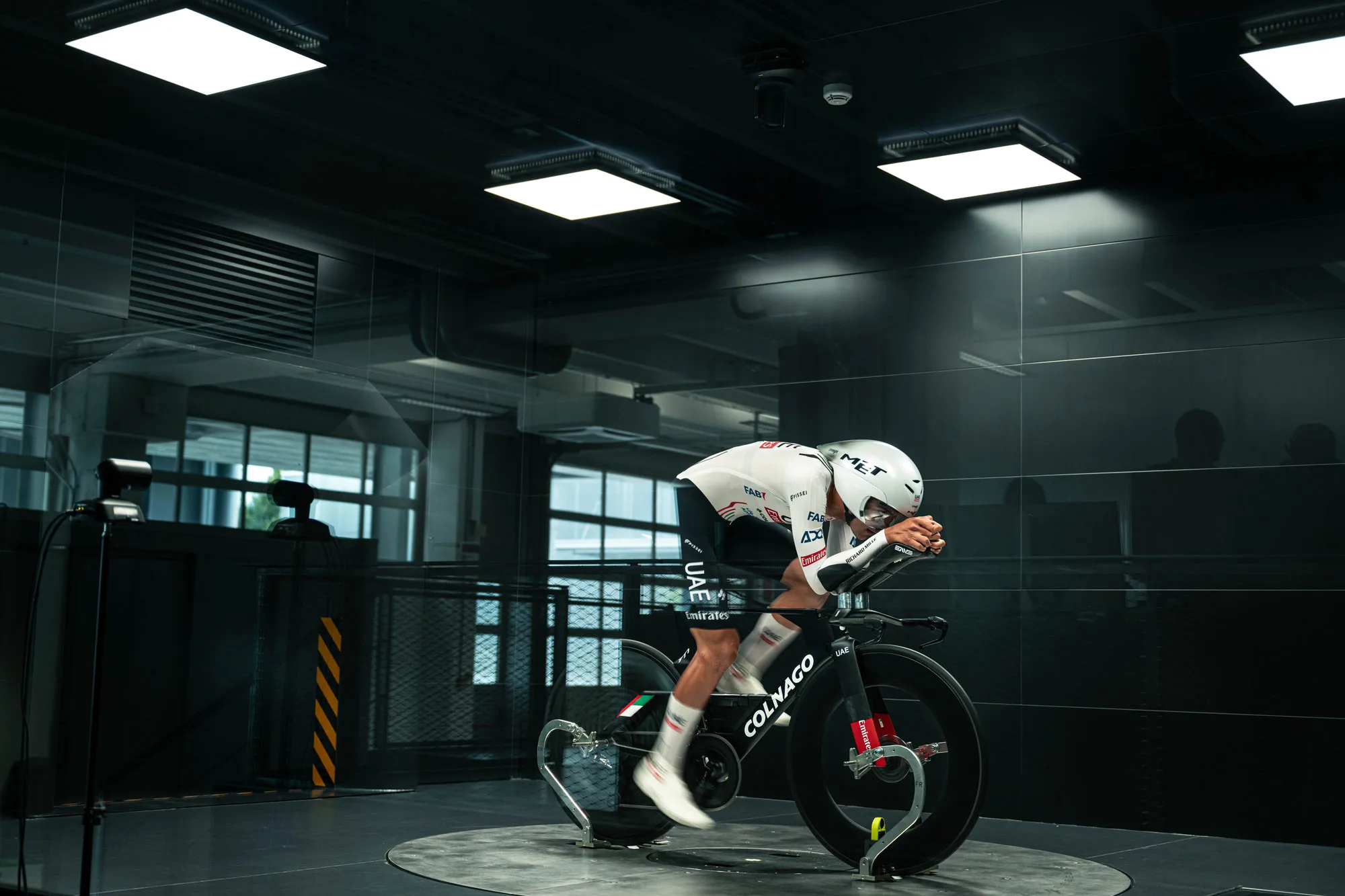Tasked by UAE Team Emirates with making the world’s fastest rider – Tadej Pogacar – even faster against the clock, MET has invested in building its own wind tunnel in Talamona Italy. Dubbed the Tube, the wind tunnel is being used for MET’s testing and development. The first major release from this venture is the Drone Wide Body II time trial helmet.
Engineered specifically for cycling aerodynamic and thermal analysis, MET’s proprietary wind tunnel is a state-of-the-art facility for testing helmets, bikes, rider positions, and any other aero equipment. According to MET, testing different shapes and configurations is key to finding the perfect balance for a variety of riders’ bodies and positions. Thanks to in-house 3D printers, MET can evaluate multiple solutions in the Tube and fine-tune the design.

MET developed the Tube to conduct two modes of testing, one using just the headform to analyze the aerodynamics of a helmet on its own, and another holistic testing setup with the bike and rider. This allows MET to evaluate not only the helmet shape but also how the helmet interacts with the rider and the whole system of rider and bike. The Tube is the latest addition to MET’s Italian HQ in Talamona, completing what is now the most advanced helmet development facility in the world. This includes a crash test laboratory, FEM virtual analysis, 3D prototyping, and now an aerodynamic and thermal wind tunnel.
What is thermal wind tunnel testing? The Tube is equipped with a headform that integrates thermal sensors around its entire crown. The headform is heated to 38°C, which simulates the temperature of the body under strain. MET engineers measure the temperature decrease over time to test air flow; the faster it decreases, the more effectively the internal air channeling is functioning.

According to MET, “the Drone Wide Body II is the second generation of the helmet that has won multiple World Tour Time Trials and Ironman World Championships. A new tail design, developed in our in-house wind tunnel, helps the new Drone II be 13.5 seconds faster over a 40 km time trial than the previous version. The linear tail design allows for a lower head position while riding.“

The MET Drone’s unique wide body design channels airflow over the shoulders, significantly reducing turbulence and drag. This results in valuable energy savings and an aerodynamic advantage for the rider. The low drag inlets are strategically positioned to reduce air turbulence and are working with an internal air channeling system to improve ventilation and comfort. With 430g, it’s among the lightest long-tail helmets on the market, offering superior comfort on a long-distance Ironman race.

Weight is 430g for both sizes, medium and large, which measure 55-58 and 58-61cm, respectively. Other key features include an in-mould polycarbonate shell with EPS liner, MET Safe-T Advanced Fit System, 360° head belt with vertical and occipital adjustments, a clear Mag-Clip Shield, and an included helmet soft bag. The Drone Wide Body II retails for $566 US.

